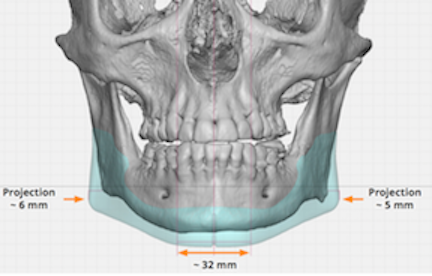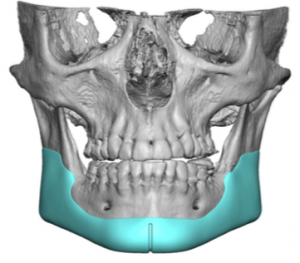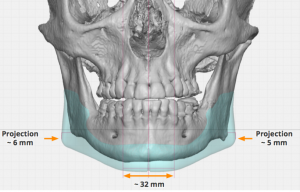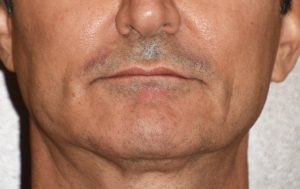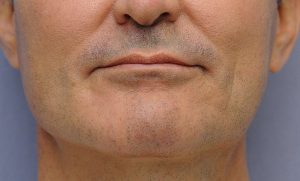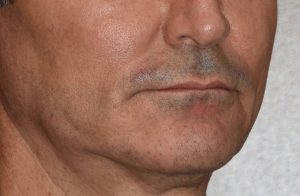Background: The proportions of the face are well known and are divided into thirds. This can be assessed in its the frontal and profile views as it is a vertical assessment. While this is not the only way to assess how balanced the face is it is one of the most obvious and basic that his easily seen and determined.
While the facial thirds and any disproportion can be easy assessed, the ability to change the facial thirds varies. The upper and lower facial thirds are the most effectively changed. It is the middle third where any effective perception of vertical change, particularly shortening, is very limited. (lip lift) The upper third is most commonly shortened by a frontal hairline advancement while it can be lengthened a bit by forehead/frontal skull augmentation. The lower third can be changed by v-line surgery for shortening and inferior border augmentation with a custom implant for lengthening.
The least appreciated change of the lower third of the face is how to lengthen it. The most well known procedure is that of the chin which can be effectively lengthened by a custom implant a little (5 to 7mms) and by an opening wedge bony geniplasty a lot. (10 to 20mms) By how to lengthen the entire jawline by inferior border expansion can only be done by two different procedures, a complete inferior border augmentation by a custom designed implant and a near complete vertical lengthening by the chin wing osteotomy.
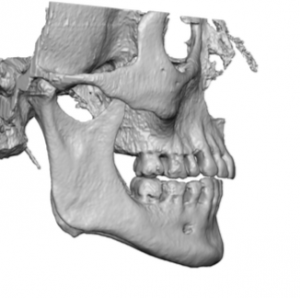
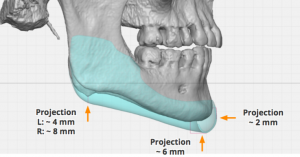
Under general anesthesia and through an external submental and bilateral paired posterior vestibular incisions, the implant was inserted in a front to back method as one piece with six screw fixation. (two at each ‘corner’)
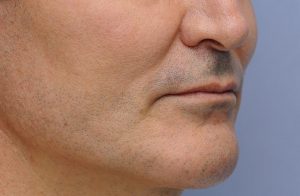
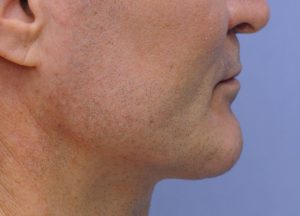
Case Highlights:
1) Lower facial disproportion can be lack of adequate vertical length of the jawline.
2) A custom jawline implant can be designed to primarily expand the inferior border of the jawline vertically.
3) With expansion of the jawline in the older male loose neck skin and jowls can be improved/eliminated.
Dr. Barry Eppley
Indianapolis, Indiana

